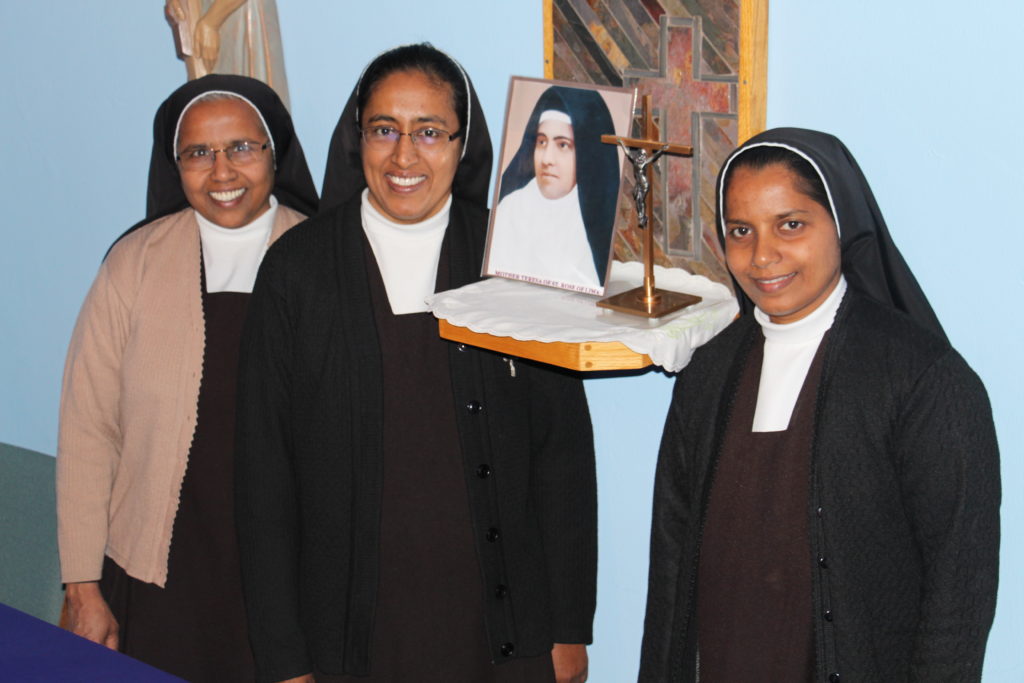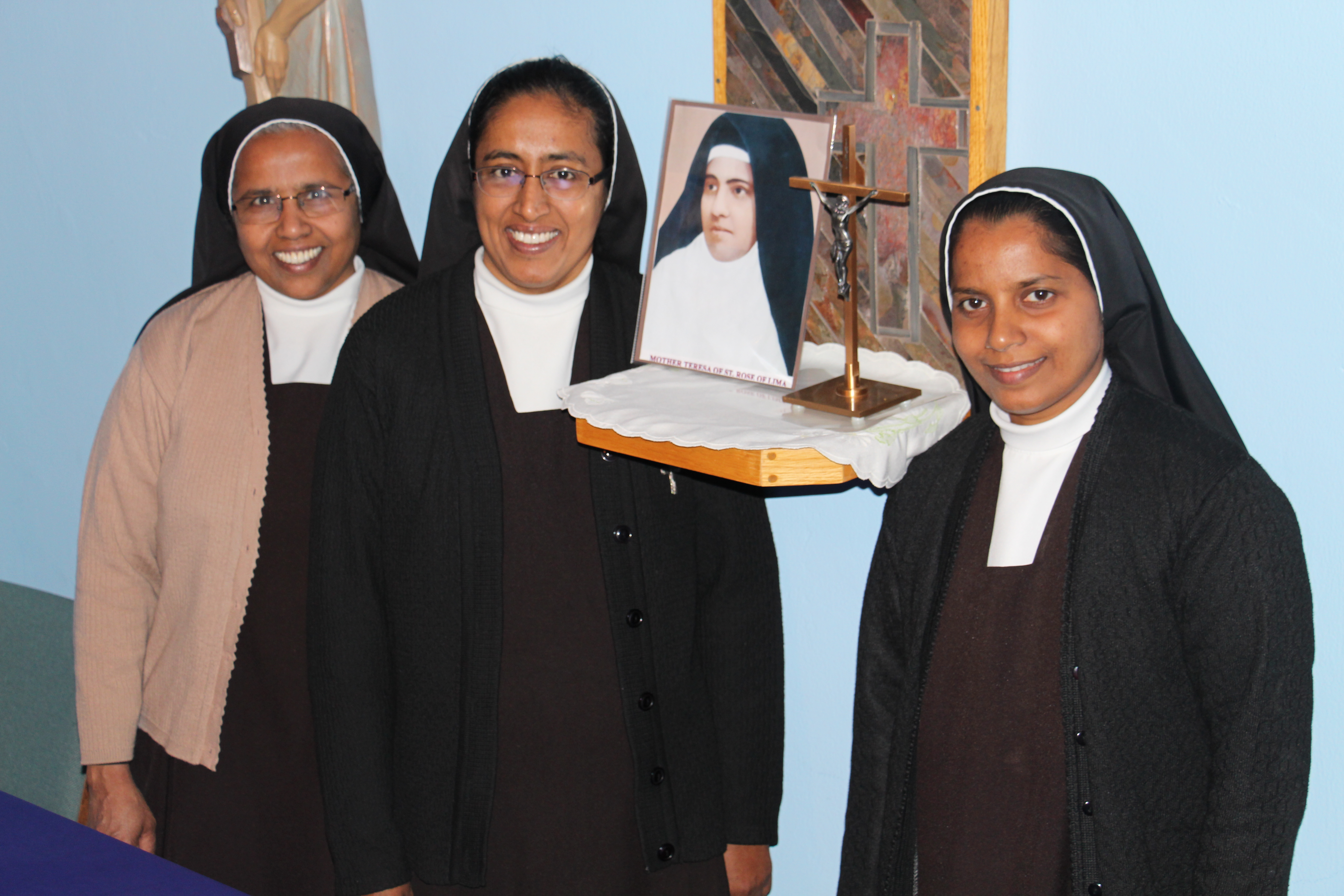
CHANDLER — Some of the younger students see the school’s newest teachers as living saints.
Who could blame them? With deep brown habits, dark eyes and an eternal smile, the three Carmelite Sisters of St. Teresa from Kerala, India, resemble images little learners have seen on holy cards or elsewhere in their studies.
For the older students plus remaining faculty, staff and parents, the sisters’ presence restores religious life on campus. A Sister of Charity spent 28 years as principal before discerning a role with the motherhouse in 2012. A sister with the Immaculate Heart of Mary, Mother of Christ briefly served as principal afterwards making the Carmelite sisters the third religious community to serve at St. Mary-Basha since it opened in 1944.
Sr. Tessy Acharuparambil, who teaches eighth grade social studies and religion and serves as the local superior, arrived in May followed by Sr. Sheena Charles — sixth grade social studies and language arts — and Sr. Nidhi Gonsalves — before and after care — in September. St. Mary-Basha Catholic School marks the second U.S. apostolate for the Carmelite sisters. Four other sisters double as nurses in a diocesan nursing home in Wichita, Kansas. They spent Christmas in Chandler.
Carmelite Sisters of St. Teresa (CSST)
Founded: 1887 as Third Order of Our Lady of Mount Carmel and later renamed
Founder:
St. Teresa of St. Rose of LimaCharism: restoring human
dignity to the broken and marginalized through presence and empowermentApostolates: education, social services, pastoral (house visits)
Service in the diocese:
St. Mary-Basha School in Chandler
There are now upwards of 900 sisters serving worldwide. The Carmelite Sisters of St. Teresa began in India in 1887 and have since opened apostolates in the United Arab Emirates, Tanzania and Kenya. They’re spread far and wide sharing diverse talents in education, social services and pastoral work, but share a common mission: experiencing God’s love in prayer and sharing it with the sisters in community and the people in ministry.
For Sr. Nidhi, these early months of service at St. Mary-Basha have fulfilled one of her life’s goals. She longed to travel in the name of the Church after studying in a school run by sisters, meeting missionary fathers at church and watching her dad become well-traveled through business.
“I really felt called to go somewhere far and join a congregation,” Sr. Nidhi told The Catholic Sun on the school’s first day of Christmas break.
Living in Arizona marks her first time outside of India. She admits finding her way has its trials, especially since Sr. Nidhi has the added challenge of supervising students during unstructured times — before and after school, lunch and recess — but said the mere fact of her being a religious often translates to an incremental level of respect from the students.
“I watch and pray. That’s all we can do,” Sr. Nidhi admitted. Some students ask her to pray over them. Others, especially the younger ones, say the sisters remind them of a particular saint.
“I’m like a holy one walking around,” Sr. Nidhi said.
All three sisters praised the welcome the St. Mary-Basha community extended them. Sr. Tessy also lauded the administration’s ability to immediately address issues, the visibility of a priest at morning prayer and the rotating presence of two or three classes for daily Mass.
“It’s a very well-established school,” said Sr. Tessy, who spent 19 years in elementary education in California and six years at the high school level in Kenya.
Sr. Sheena, who has spent 12 years with the Carmelite sisters in India and one at an elementary school in California, sees her role at St. Mary-Basha as mentoring students — largely boys this year — to be successful in junior high and high school.
“I find them being very spontaneous and very interactive,” she said.






